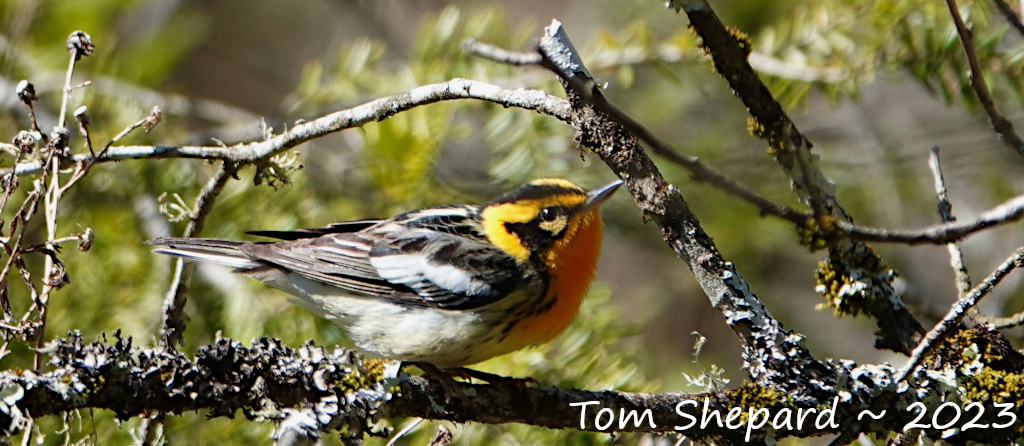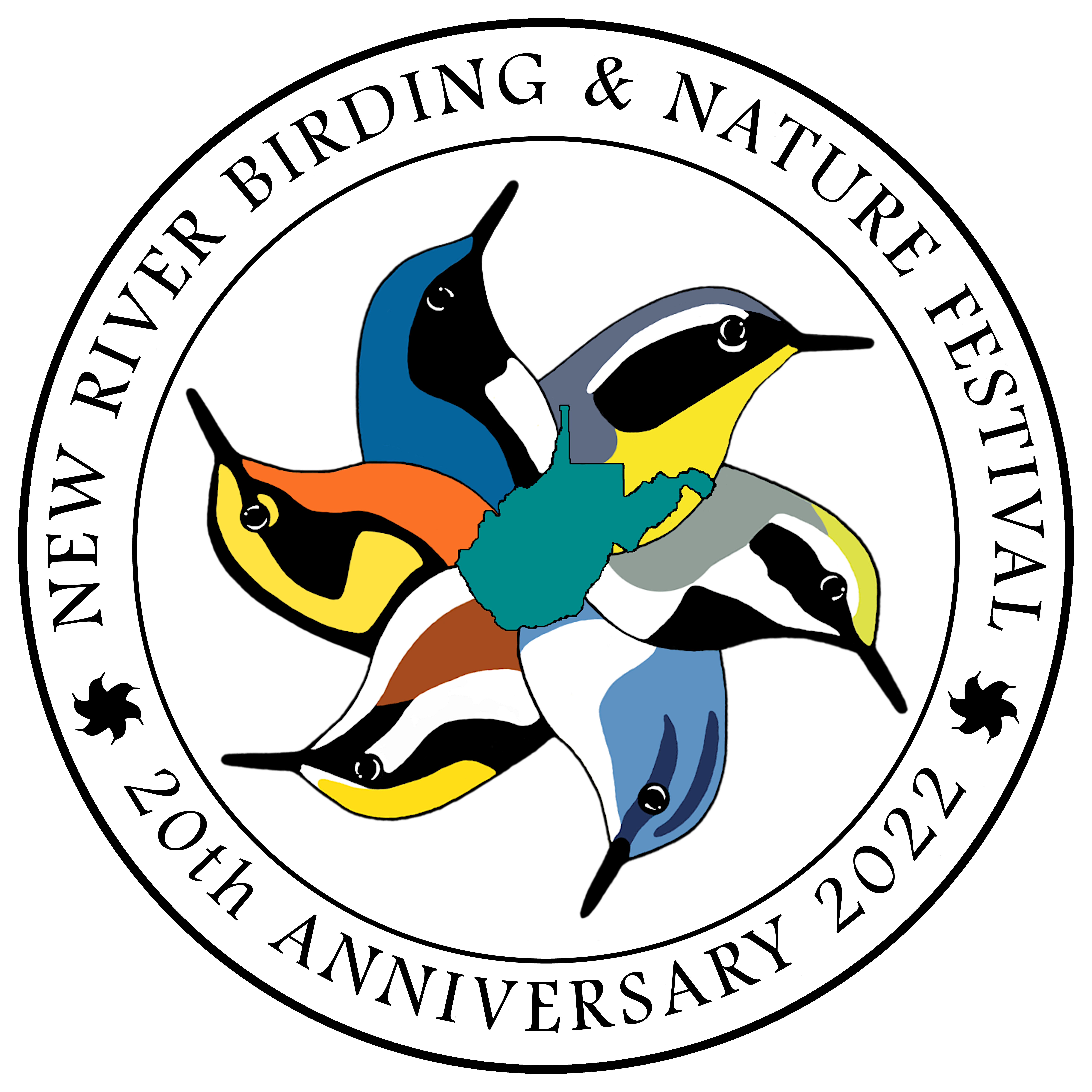Christmas Bird Count in Fayette County, WV
Community science and bird watching. Yes, please!
The Christmas Bird Count (CBC) is a program of the National Audubon Society since 1900, in which thousands of volunteers across the U.S., Canada, and many countries in the Western Hemisphere spend a day counting birds within their local geographical circle. All skill levels are encouraged to participate. CBC history and answers to frequently asked questions can be found at audubon.org.
Participation is Free.
Sign up is Required. Send your name, email address and phone number to the circle compiler, This email address is being protected from spambots. You need JavaScript enabled to view it.. You'll be contacted to discuss a survey area or place.
Spend as time as you want to. December 16th, identify the species of birds you see and hear, and count the number of each.
Easy-peasy. Complete a digital or printed data collection form(s) and send to Rachel. Online WVOH CBC Data Collection Form. Using this online data entry form, a copy of your entered data is immediately provided to you.
Warm up after. Participants are invited to warm soup and warm drinks, from 4 to 6PM, in Mount Hope. An opportunity to meet other participants, share stories from the day, and begin the total tally of species observed! Location address is shared to participants.
Date: TENATIVELY December 14, 2024 Count Year: 125 Circle Name: WVOH (Fayette County, WV)
Covering a 7.5 mile radius from the intersection of Lochgelly Rd, Summerlee Rd, and Byrnside St in Oak Hill, covering territory between Beckwith to Mount Hope, and Mossy to Cunard.
WVOH Circle Compiler: Rachel Davis
Completed Data Collection Forms may be scanned or photographed and returned by email or text to Rachel immediately. The preferred method is the online collection form.
CY 124 Overview of Results:
29 participants 2212 total birds 54 species 5 feeder reports 13 field reports 0 nocturnal reports 189.75 total participant miles 67.75 total participant hours
"The Oak Hill Christmas Bird Count, held on December 16th with 29 participants, covered nearly 190 miles and counted 2,212 birds of 54 species. The total species is slightly above average in the circle's forty-four-year history, and the total of participants is a new high record! A few of you joined others on their respective routes, a few elected to take routes and destinations on your own, and others counted from home!
There's so much more territory to cover, especially in the west-north-west quarter of the circle, I'm hopeful more folks will enjoy it with us next year on a route, to a destination, or from the comfort of home. Send new folks this way, any time of year. I'll contact them next fall when I reach out to you all again. Tentatively, our next CBC count day will be the first Saturday of the count season, December 14, 2024. We'll hold the warm soup social again, too!
The most uncommon species of this count, recorded on only two previous counts, was the Common Merganser: Daniel Rubianto observed 4 on the New River at Stone Cliff campground. Red-tailed Hawks pushed their previous high count up one more digit, to 10. The number of Turkey Vultures and Common Ravens tied with their previous high counts of 29 and 10, respectively." - Rachel Davis
How Do Counts Work?
Circle Map
Sign Up to Participate
Participant Guide to Data Collection
WVOH CBC Data Collection Forms
Rare Bird Report
Print: Car Sign pdf
Audubon CBC Live
WV Audubon CBC Archives
How Do Counts Work? (from audubon.org)
There is a specific methodology to the CBC, so all participants must make arrangements to participate in advance with the circle compiler, and the CBC is open to everyone!
Each count takes place in an established 15-mile diameter circle, and is organized by a count compiler. Count volunteers follow specified routes through a designated 15-mile (24-km) diameter circle, counting every bird they see or hear all day. Not just a species tally—all birds are counted all day, giving an indication of the total number of birds in the circle that day.
Birders of all skill sets are involved in the CBC.
If your home is within the boundaries of a CBC circle, then you can stay at home and report the birds that visit your feeder on count day as long as you have made prior arrangement with the count compiler.
Find more Answers to your top questions about the Christmas Bird Count, on audubon.org. 
Circle Map
WVOH Circle Map on audubon.org, and all other circles. The WVOH Circle covers a 15 mile diameter that includes territory between Beckwith to Mount Hope, and Mossy to Cunard.
Sign Up to Participate
Participation is free, but you must sign up in advance. Contact the Circle Compiler This email address is being protected from spambots. You need JavaScript enabled to view it. with your name, phone number and email address; you will be contacted to discuss survey areas and routes.
Participants’ Guide to Data Collection (from audubon.org)
Talk with your circle compiler in advance of the count day for guidance on survey areas and routes.
1. Record every bird seen or heard in your assigned area, between midnight and 11:59 pm on the count date.
2. Try to cover your assigned route as thoroughly as possible during daylight hours.
3. Nocturnal birding or “owling” is optional.
4. Record all hours spent watching or listening for birds.
5. Record all miles traveled while watching or listening for birds (see guide to CBC party miles/hours for details).
6. Record each mode of transportation (by foot, by car, etc), and match the mode with # hours and miles for each type.
7. Record hours watching at feeders separately from any birding in the field.
8. Record hours and miles “owling” (nocturnal birding) separately from any birding in the field during count day.
9. Give your completed WVOH CBC Data Collection Form to your Circle Compiler within 24 hours of the count day.
Field Observers (excludes Feeder observers and Nocturnal/Owling observers)
Birds tallied by observers in the Field during daylight hours are counted separately from Feeder observers, and separately from Nocturnal/Owling observers. While in the Field, if you happen by a feeder, those birds are counted in the Field.
Round hours to the nearest quarter-hour, and distances to the nearest quarter-mile or quarter-kilometer.
Two (2) or more individuals observing together make a "party."
Distance by Foot is the effort of the party, not a sum of the individuals. For example: 3 individuals walking together 1 mile is 1 mile for the party; if the party splits and 2 individuals walk 1 mile in one direction and 1 individual walks 1 mile in another direction, the party walked 2 miles.
A route re-traced is recorded as the one-way distance. For example: An individual or party walks 1 mile out a path then returns the same way, the distance is recorded as 1 mile.
Hours by Foot records the entire time spent on the path, not just the one-way distance.
If appropriate, enter a 0 for distance. For example: A stationary individual or party observing a roost, lake, or river bank may spend 1/2 hour in one spot resulting in 1/2 hour and 0 miles.
If you don't travel by foot or by car, indicate the mode of transportation on your Report (bicycle, atv, boat, etc.).
Counting when re-tracing your route - If an individual or party needs to retrace their path along their route, birds should not be recounted. However, if other species or new individuals of the same species are encountered, they should be counted. For example: A party walks out a trail and counts 10 robins, later while retracing their steps back they count 15 robins and a crow, they would record 15 robins and 1 crow.
Print a WVOH CBC Field and Nocturnal/Owling Data Collection Form.
Feeder Observers (excludes Field observers and Nocturnal/Owling observers)
Round Feeder observation hours to the nearest quarter-hour. Feeder observation hours is the time a feeder was observed, not a sum of time for all individuals watching a feeder at the same time. For example: 2 people watching one feeder, 1 person watches from 8:00 - 9:00 and the other watches from 8:30 - 10:00, the total observation time for that feeder is two hours. If those 2 people watch two separate feeders, the time is added together for a total of two and a half hours.
While in the Field, if you happen by a feeder, those birds are counted in the Field.
Record the maximum number of each species visible or within earshot at one time. Do not continue to add chickadees for the entire watch period.
Print a WVOH CBC Feeder Data Collection Form.
Nocturnal/Owling Observers (excludes Field observers and Feeder observers)
Birds tallied by observers during non-daylight hours.
Round hours to the nearest quarter-hour, and distances to the nearest quarter-mile or quarter-kilometer.
Two (2) or more individuals observing together make a "party."
Distance by Foot is the effort of the party, not a sum of the individuals. For example: 3 individuals walking together 1 mile is 1 mile for the party; if the party splits and 2 individuals walk 1 mile in one direction and 1 individual walks 1 mile in another direction, the party walked 2 miles.
A route re-traced on foot is recorded as the one-way distance. For example: An individual or party walks 1 mile out a path then returns the same way, the distance is recorded as 1 mile.
Hours by Foot records the entire time spent on the path, not just the one-way distance.
If appropriate, enter a 0 for distance. For example: A stationary individual or party observing a roost, lake, or river bank may spend 1/2 hour in one spot resulting in 1/2 hour and 0 miles.
If you don't travel by foot or by car, indicate the mode of transportation on your Report (bicycle, atv, boat, etc.).
Print a WVOH CBC Field and Nocturnal/Owling Data Collection Form.
WVOH CBC Data Collection Forms - complete and return on December 16, 2023
Completed printed Data Collection Forms may be scanned or photographed and returned by email or text to Rachel as soon as possible. The online form is the preferred method.
Print a WVOH CBC Field and Nocturnal/Owling Data Collection Form.
Print a WVOH CBC Feeder Data Collection Form.
Online WVOH CBC Data Collection Form. *PREFERRED* Using this online form, a copy of your data is sent to the email address you provide as "Observer."
WV Audubon CBC Archives, provided by the Brooks Bird Club in Wheeling, WV.
Rare Bird Report
Print, complete and return to This email address is being protected from spambots. You need JavaScript enabled to view it. immediately. Rare Bird Report form, pdf.
Audubon LIVE
See what other people around the hemisphere are doing/seeing on their Christmas Bird Counts and add your own count day photos on the Audubon's CBC LIVE interactive map.
WV Audubon CBC Archives
WV Audubon CBC Archives provided by the Brooks Bird Club in Wheeling, WV.




